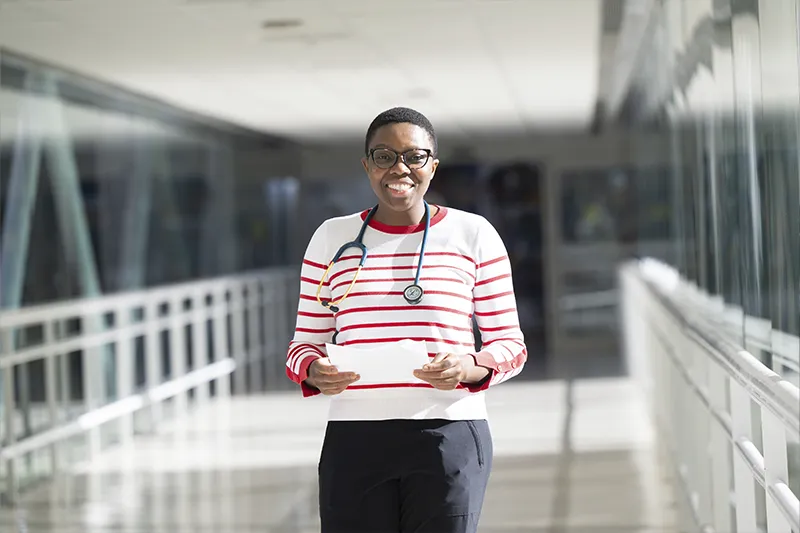As a bone marrow and stem cell transplant specialist for children with primary immune deficiencies (PID) and primary immune regulation disorders (PIRD), both of which are rare, and potentially debilitating or deadly diseases, Olatundun Williams, MD, a pediatric hematologist/oncologist at NewYork-Presbyterian/Columbia, emphasizes a comprehensive approach that combines the program’s unique expertise with compassionate patient care.
“A transplant can be an emotional and challenging experience for a patient and family, and being present for them through this is special,” says Dr. Williams. “Because we meet patients at the beginning of their care, then taken them through their transplant, and continue to see them through their follow up, we have a really unique and long-term relationship with each patient.”
Dr. Williams sees patients with various medical comorbidities and complications, and therefore also have a lot of specialists involved in their care. To ensure each patient received individualized care, she crafts a detailed transplant plan that includes input from all involved disciplines, keeping the patient’s best interests and quality of life in mind. Below Dr. Williams shares more on her passion and perspective with the Department of Pediatrics at NewYork-Presbyterian/Columbia on this rapidly evolving field of medicine.
What are immune deficiencies and immune dysregulation disorders, and how are they treated?
Primary immune regulation disorders (PIRDs) and primary immune deficiencies (PIDs) are rare genetic diseases that disable the body’s immune system. Because the immune system has trouble functioning or regulating itself, children with these conditions tend to develop problems such as inflammation, autoimmune conditions, and allergic conditions, and have difficulty fighting off infections. Over the past decade or so, we have witnessed the development of targeted therapies for some of these disorders, but transplantation is something that we can offer these patients beyond the limited arsenal of medicines, and, in some cases, has the potential to be a cure.
What types of immune deficiencies and disorders are treatable with transplantation?
We know that transplant outcomes can be very favorable in certain conditions including the classic immune deficiencies—disorders like severe combined immune deficiency (SCID), chronic granulomatous disease, hyper-IgM syndrome, and Wiskott-Aldrich syndrome. And we have good data on outcomes in specific primary immune regulation disorders—including immunodeficiency polyendocrinopathy X-linked syndrome (IPEX), hemophagocytic lymphohistiocytosis (HLH), and autoimmune lymphoproliferative syndrome (APLS). There are a number of other conditions that we can also treat through transplant, given each patient’s clinical circumstances. And the list of transplantable conditions keeps growing as the research community does more and more next-generation sequencing and discovers more of these disorders.
What does a transplant entail?
It starts with us identifying the best stem cell donor for a patient and collecting stem cells from that donor. A donor can be a family member or someone who is unrelated to the patient. Next, we prepare the patient’s body to receive the new stem cells. We usually do this with strong medicines, like chemotherapy, that make space for the new stem cells and prevent the body from rejecting the stem cells. And then comes an exciting day- the day we give the patient their new stem cells. We give the cells through an IV and wait them to find a home in the bone marrow. The patient is usually in the hospital for a few weeks for all these procedures and so we can monitor for any complications of the transplant.
How do patients generally do after transplantation?
Patients’ outcomes depend on a number of factors. In the best-case scenario a patient has a fully matched stem cell donor and ends up with a complete reversal of their phenotype. Other patients may have a partial reversal of their condition, which might both prolong their life and give them a better quality of life. And in some patients, the transplant doesn't take – they never engraft, or the graft fails, and we're unable to cure the condition.
For me, it’s the marriage of a scientific perspective with the real impact transplant can have on my patients and their lives. Bringing the two together has been really gratifying.




